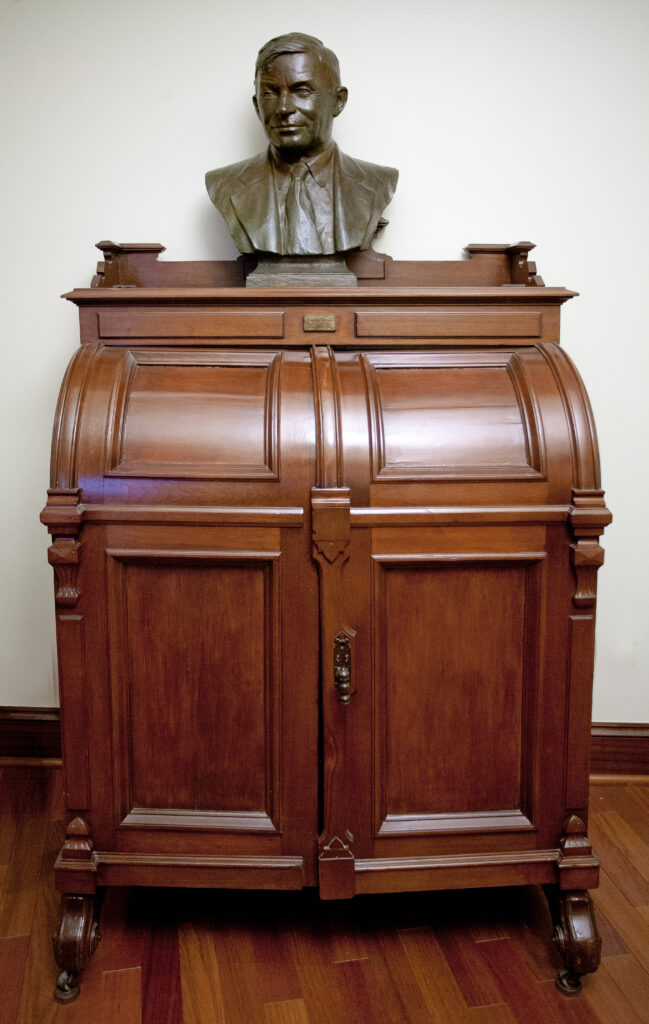Oklahoma’s favorite son, Will Rogers, was born near Oolagah in Indian Territory on November 4, 1879. A member of the Cherokee tribe, Rogers’ father, Clement Rogers, served as a Cherokee judge and was also a delegate to the Oklahoma Constitutional Convention. Rogers County in eastern Oklahoma is named for him.
Will’s pursuits tended to be less conventional than his father’s. The travel bug bit him early. In 1901, Will worked as a cowboy briefly in Argentina and South Africa before joining a circus as a trick roper in Australia. By 1904, he had returned to the United States to perform in vaudeville shows. As the years passed, he began incorporating witty commentary on current affairs into his act. In 1918, he made his movie debut in the title role of Laughing Bill Hyde. In 1922, he started writing a newspaper column that was soon syndicated across the country. In all, he starred in 71 movies and wrote more than 4,000 newspaper columns.
Will Rogers is venerated in Oklahoma. Public buildings, parks and thirteen public schools bear his name. Former Chief Justice Steven Taylor attended Will Rogers Elementary School in McAlester. The Will Rogers Memorial is located in Claremore, Oklahoma.
Sculptor Herbert Adams was a leading American sculptor during the first half of the twentieth century. His biographical information appears on page 16. The Will Rogers’ bust, along with a bust of Wiley Post, was presented to the Historical Society in a special ceremony on February 13, 1938. The proceedings began with a fly-over by the Southwestern Aviators Association who dropped floral offerings on the front steps of the Historical building. The Indian Glee Club from Mountain View, Oklahoma then sang “America.” The main address was delivered by Judge Thomas Doyle of the Court of Criminal Appeals and President Emeritus of the Historical Society. Doyle’s biographical information appears on page 18, and an excerpt of his speech appears on page 10. The bust of Will Rogers is displayed in the Chief Justice’s Chambers, atop a nineteenth century Wooten Desk. Indianapolis entrepreneur William Wooton patented his desk design on October 6, 1874, calling it “Wooton’s Patent Cabinet Office Secretary.” The multiple drawers and slots were in response to the recent technological advancement of the typewriter. It vastly increased the amount of paperwork produced, creating demand for desks with spaces to hold all that paper. Ads at the time described it as “The most complete desk for filing documents ever made. Well adapted to the use of county officers.” The desk would have originally had a drop-down leaf used as a writing surface. Slots for metal slides to secure the leaf are still visible on either side of the main unit.
This particular Wooton Desk was manufactured by Sutherland & Flach of Detroit, Michigan. Their company is listed in the 1877 Michigan State Gazetteer as being owned by James Sutherland and Charles Flach. The company was not listed in the 1890 directory, so this desk was made sometime between 1877 and 1890. Four different models were produced: ordinary, standard, extra grade and superior grade, depending on the wood veneer and elaborateness of ornamentation. This model is most likely an “ordinary” and would have sold for around $100 and may have been used in a county office or library. This desk is believed to have been a gift from the Cherokee Nation, donated to the Oklahoma Historical Society. The piece has been returned to service and is currently used as a distribution center for internal Supreme Court documents.
The Wooton desk, along with the bronze bust of Will Rogers, is on permanent loan from the Oklahoma Historical Society.
